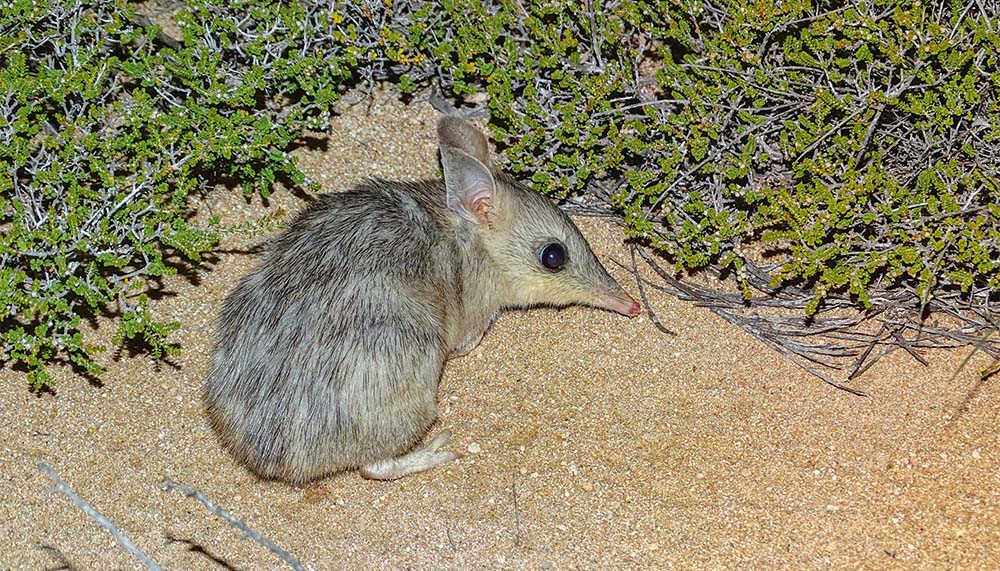On Dirk Hartog Island, near Carnarvon, WA, biologists are trying to restore and recreate the functioning ecosystems and balance of species that were in place 400 years ago.
Story Aleisha Orr Photo Saul Cowen
Each smaller than a fingernail, eight pink dibbler joeys in the pouch of their mother are a tiny indication that a team is successfully winding back the clock 400 years. The female dibbler had been raised at Perth Zoo and then released on Dirk Hartog Island, near Denham, WA. The fact that she is breeding excites Dr Saul Cowen and his team at WA’s Department of Biodiversity, Conservation and Attractions (DBCA), who have been tasked with reconstructing the ecosystem of the 63,000ha island, aiming to restore it to what it would have been like before Dutch explorer Dirk Hartog landed there in 1616. “It shows they are not only surviving on the island, but they are finding each other and breeding, and that’s the first step towards a successful translocation, so that was really thrilling,” he says.
‘Return to 1616’ is one of the biggest ecological restoration efforts in the world. It is not only about animal reintroductions, but animal eradications, weed management and the subsequent rewilding of the area, which began about a decade ago. Feral cats, sheep and goats have been removed, making way for the team to begin reintroducing 13 native species. Saul says that re-creating an ecosystem that existed in 1616 is not as simple as reintroducing the species that have since become extinct. Every possible interaction needs to be considered – interactions between each of the reintroduced and existing species, and the interactions with their new environment.
This story excerpt is from Issue #142
Outback Magazine: April/May 2022










